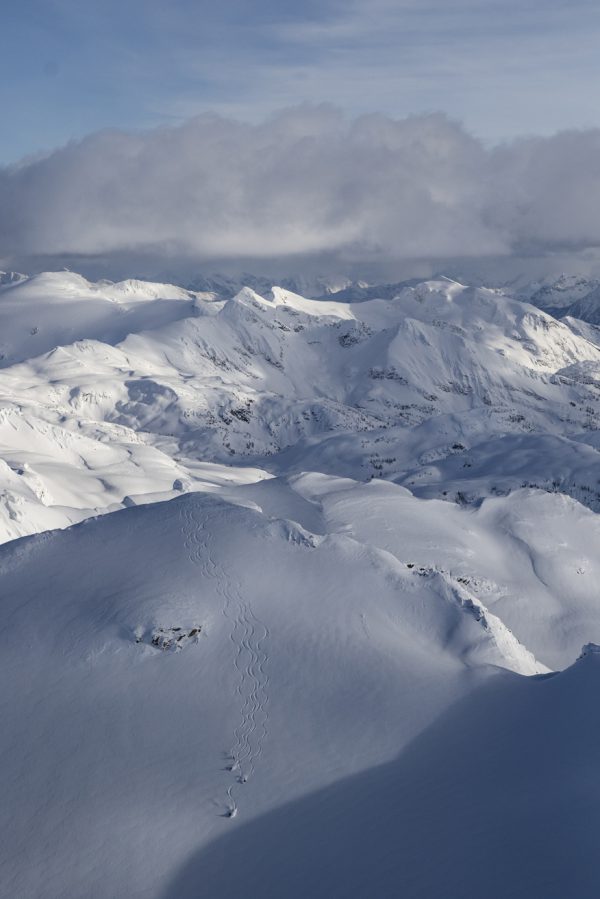When it comes to skiing, I’ve never been one to keep score. Take ski racing, for instance—the one discipline of the sport that I’ve actively avoided all these years. I once “lost” a dual-slalom against a woman from Minnesota who was old enough to be my mother, and who charitably said, “You would have beaten me if you hadn’t been racing on those fat skis.” Ouch.
Our world is increasingly ruled by numbers, except that now it’s known as “data.” And although my dozens of social media followers might find it hard to believe, I actually can enjoy a day of skiing without snapping a turn sequence on my smartphone. The one function that I make sure I never use (although oddly enough, the data is still recorded) is Vail Resorts’ EpicMix app—you know, the one that “tracks” how many tens of thousands of vertical feet you’ve skied in a day/season/lifetime.
I was reminded of “the fuss about vertical” while researching Mike Wiegele’s obituary for The Globe and Mail. Bob Sayer, Mike’s long-time chief of operations, told me that “in the beginning, we would post vertical totals for each group so that skiers would know how close they were to getting their 100,000 vertical.”

At the time, skiers were guaranteed 100,000 vertical feet in a week, but were then surcharged for every foot they skied above that figure. This wasn’t much of an issue when guys had to negotiate tight glades on 203-cm skinny race skis—hell, some skiers were exhausted after four runs. But once Wiegele began stocking Atomic Powder Pluses, vertical totals rose significantly. To ensure that customers didn’t get sticker shock when it came time to pay their bill on departure, Wiegele’s guides would post the daily total for their group just before dinnertime. Alas, the recording of vertical—this was well before the Avocet watch—had unintended consequences.
It’s no secret that heli-skiing also attracted highly competitive big shooters who love nothing better than “being number one.”
“Once the guides posted the totals for each group, guests would drop what they were doing and run over to check the sheet. A handful of skiers—maybe 10 or so—would let out a big cheer, while the other 80 would drown their sorrows at the bar, and then,” said Sayer, “they were in a bad mood. So, it really turned into this competition, losing sight of the fact that the vertical has nothing to do with how great a day you had.”
At Sayer’s behest, Wiegele instituted a new “unlimited vertical” policy. Since skiers no longer need to worry about getting hit with a vertical surcharge, guides no longer needed to post the daily vertical totals. He explained, “Now everyone at the bar was happy. [Instead] they were talking about the skiing.”
One would think that these folks might enjoy a week of skiing that’s free from “exceeding sales targets” or “entering a not-guilty plea,” but hey, let’s not be judgmental. Alas, Wiegele himself had a bit of a competitive streak. When he found out that a guest up at Klondike Heli-Skiing in Atlin, B.C., had racked up over 300,000 feet in a day, he assembled an A-list team that included former national ski team members Chris Kent, Luke Sauter and Edi Podivinsky to re-establish the record.
As a writer, I’ve never subscribed to the scientific maxim that “if it can’t be measured, then it doesn’t exist.” Twenty odd years ago, I was heli-skiing with another operator and thrown in with a group of Swiss bankers who indeed made a big deal about how much vertical they were getting. Call me crazy (coincidentally, that’s also the title of a wonderful award-winning documentary on Wiegele’s life), but I thought that humans had left that whole “survival of the fittest” thing behind shortly after emerging from our caves several millennia ago.



